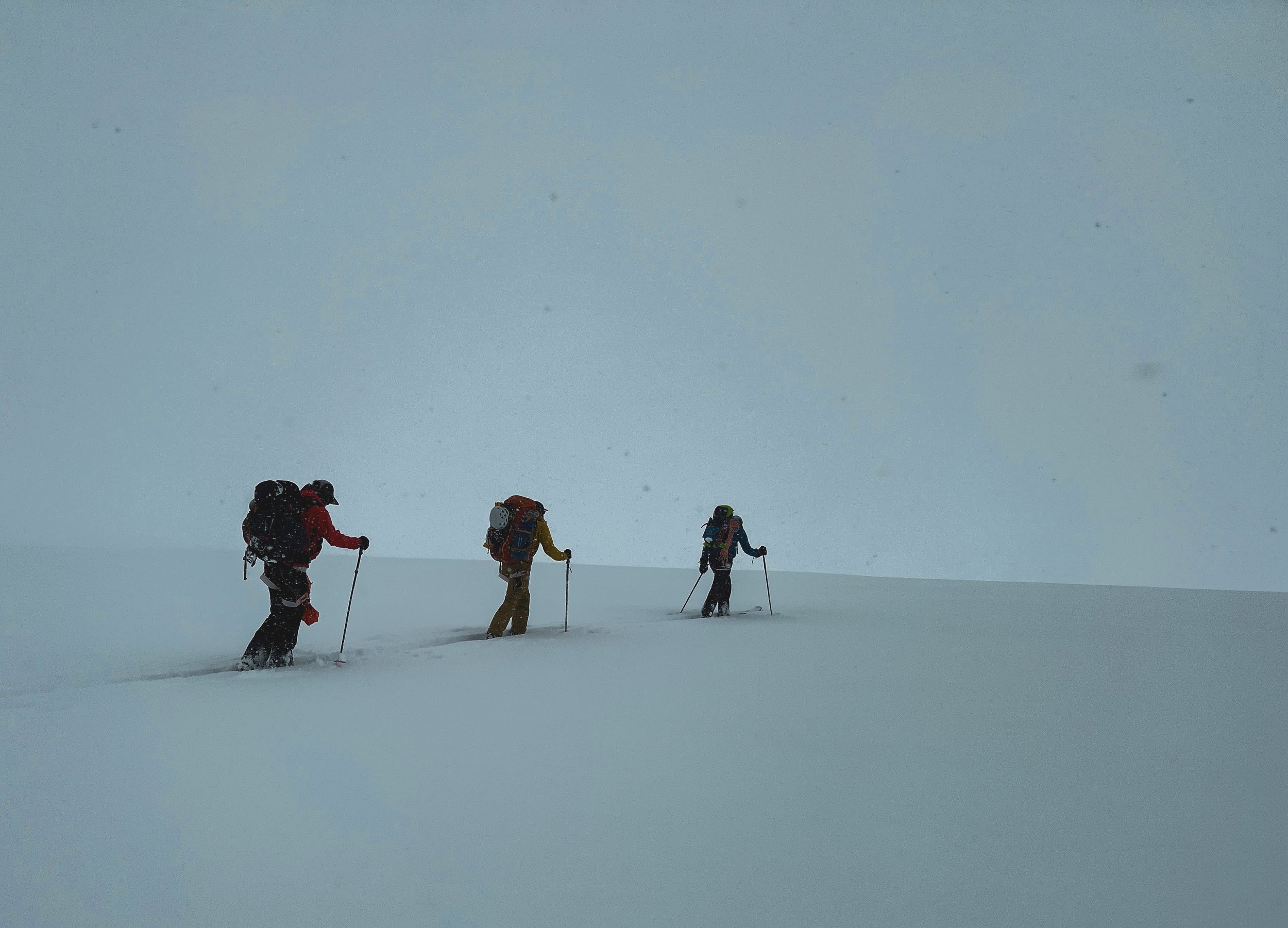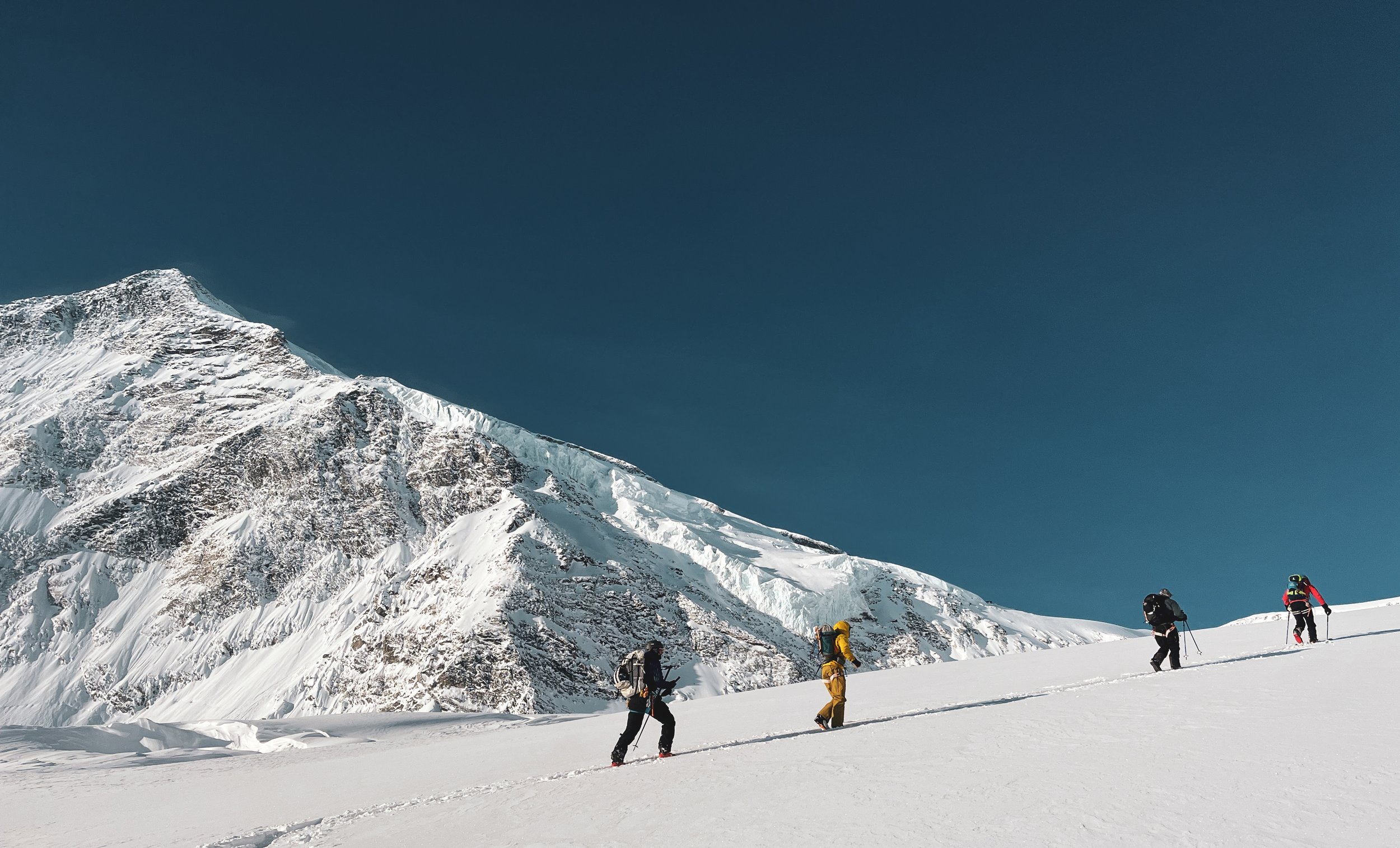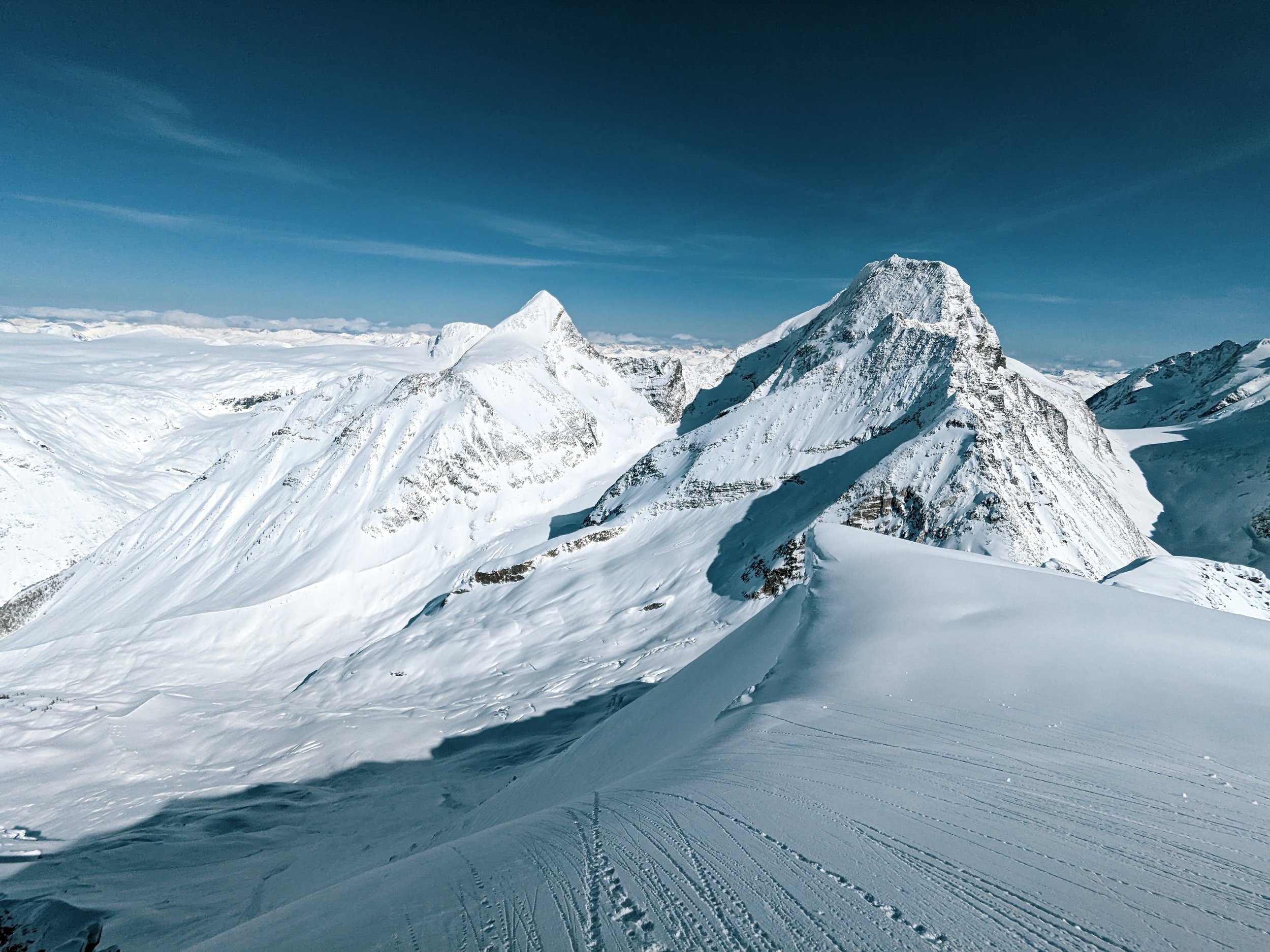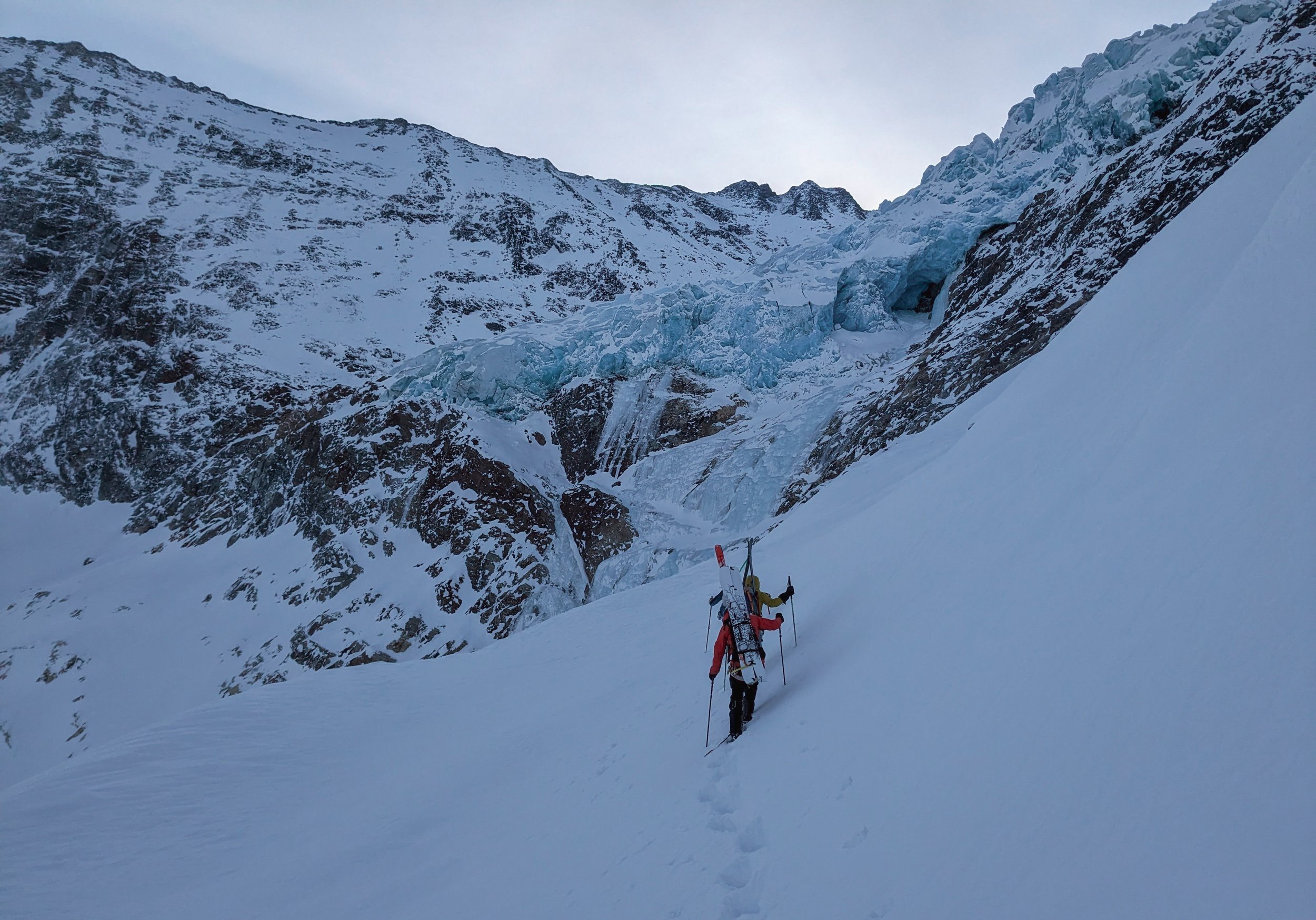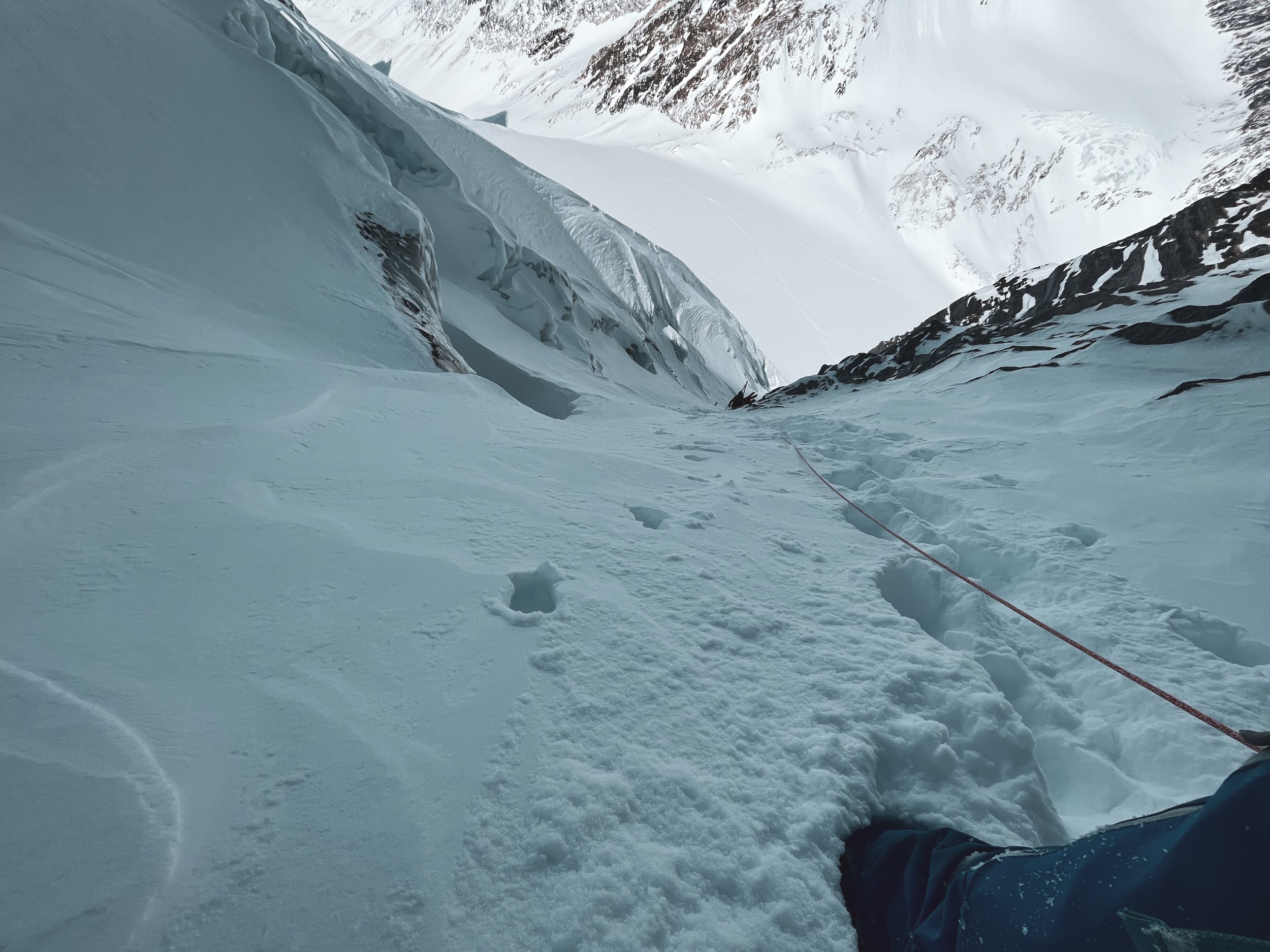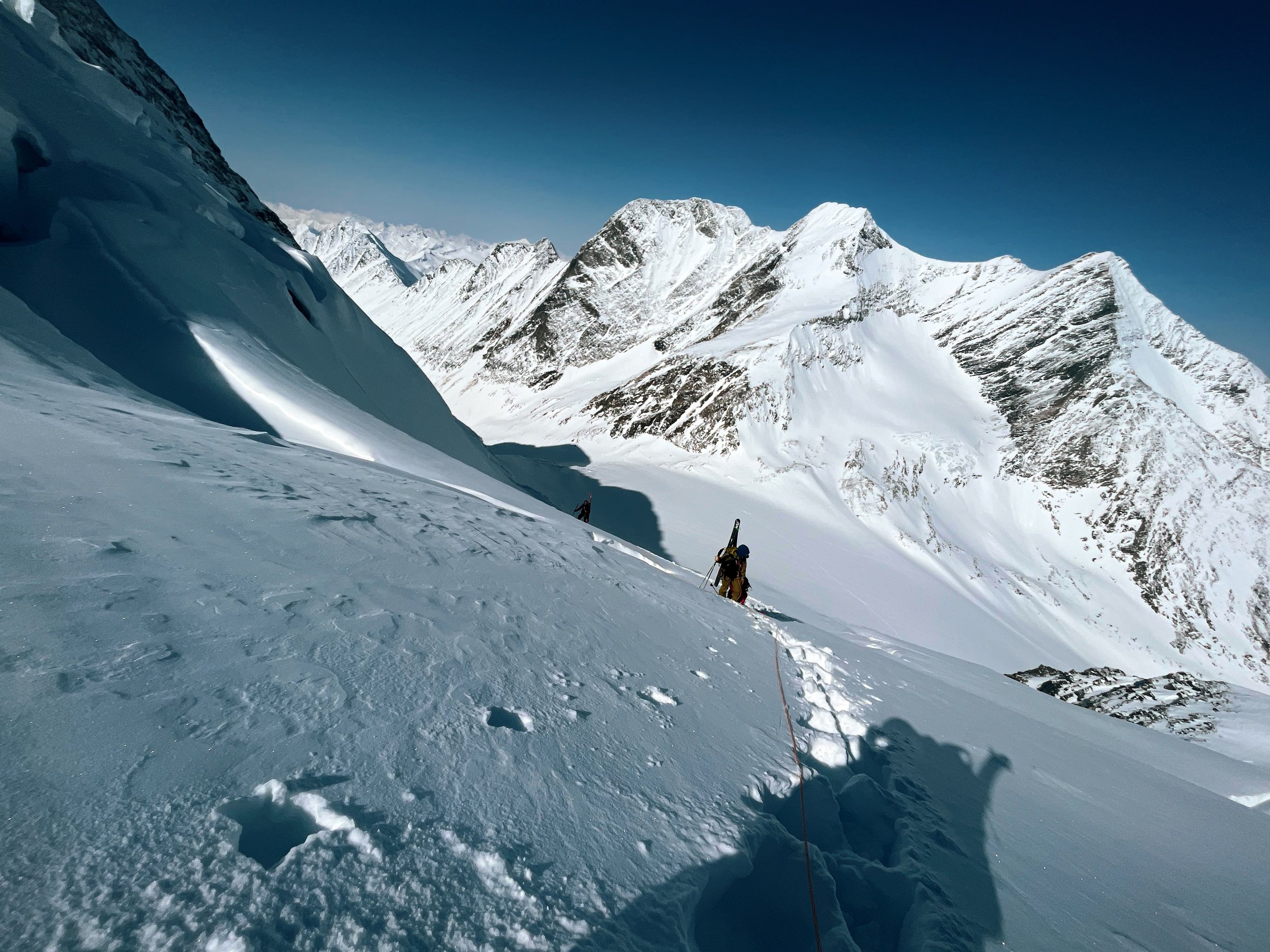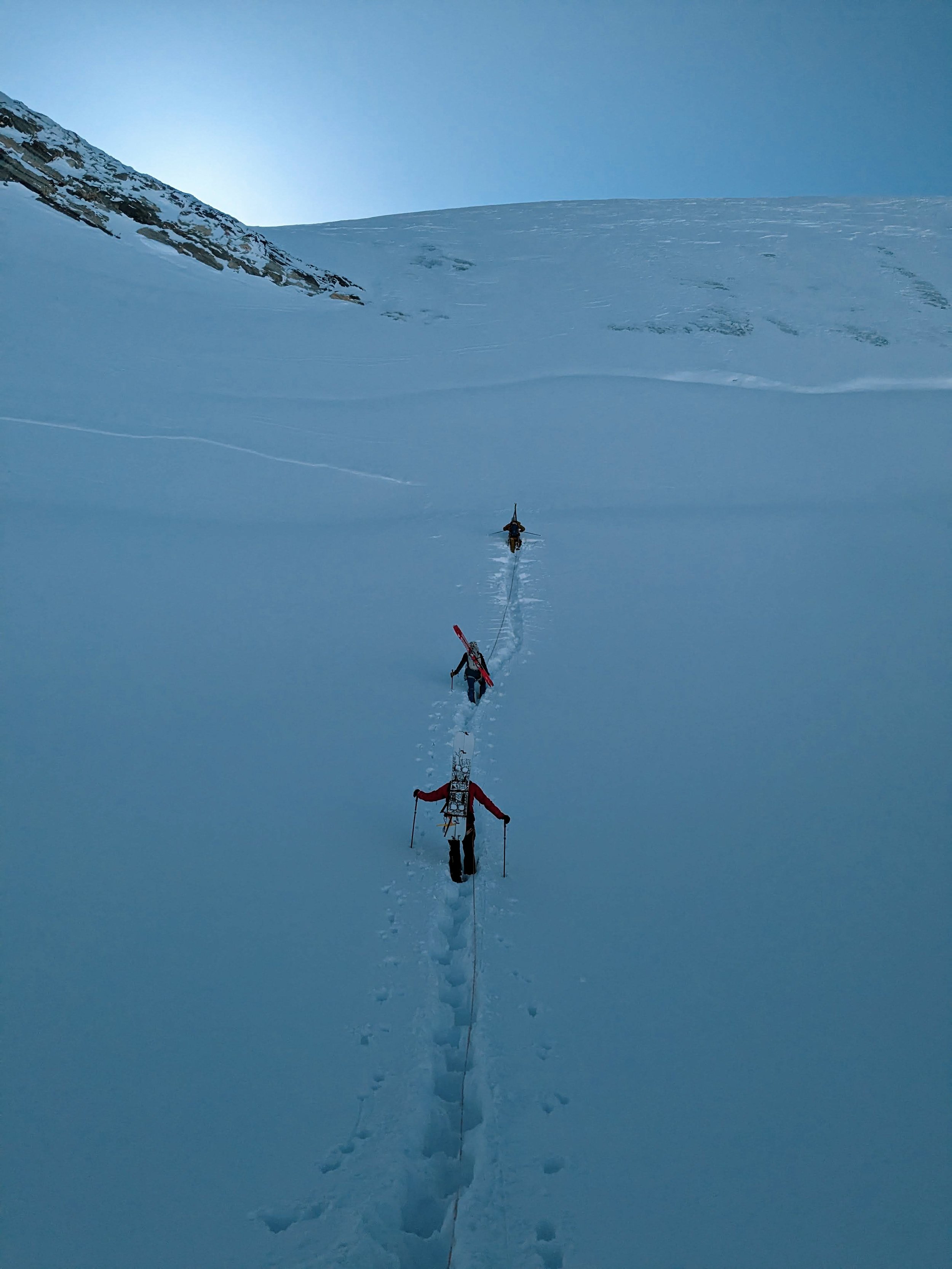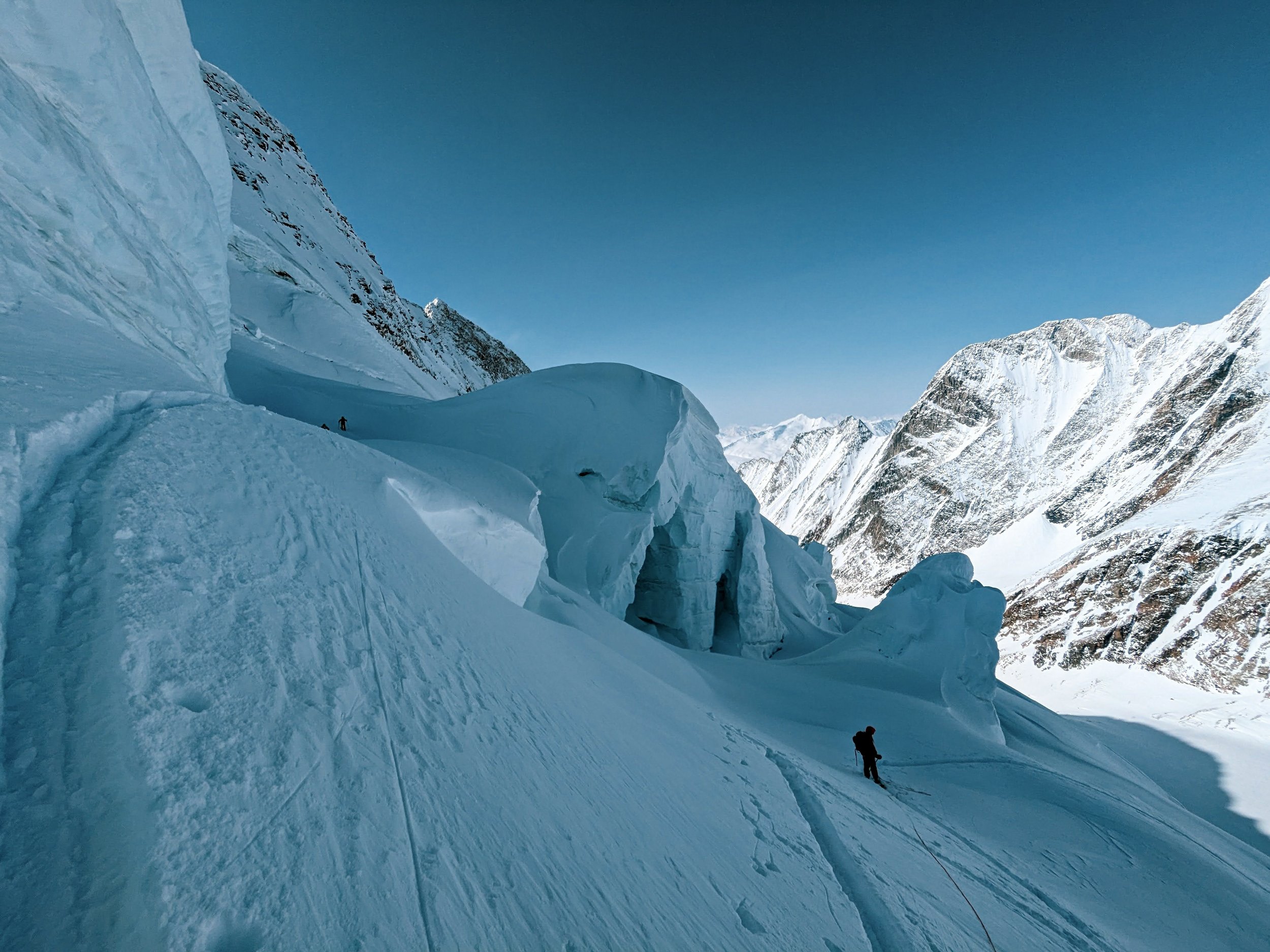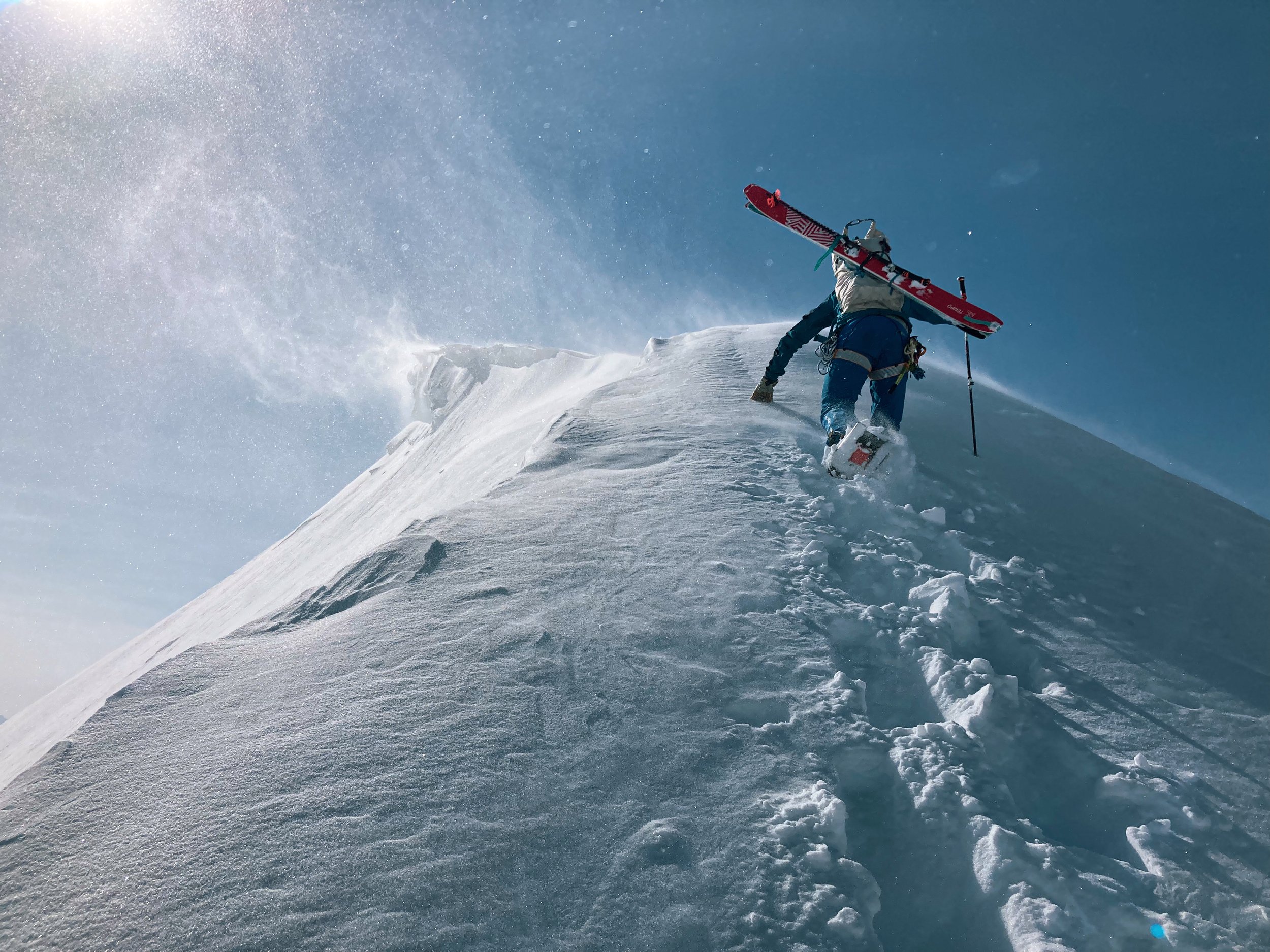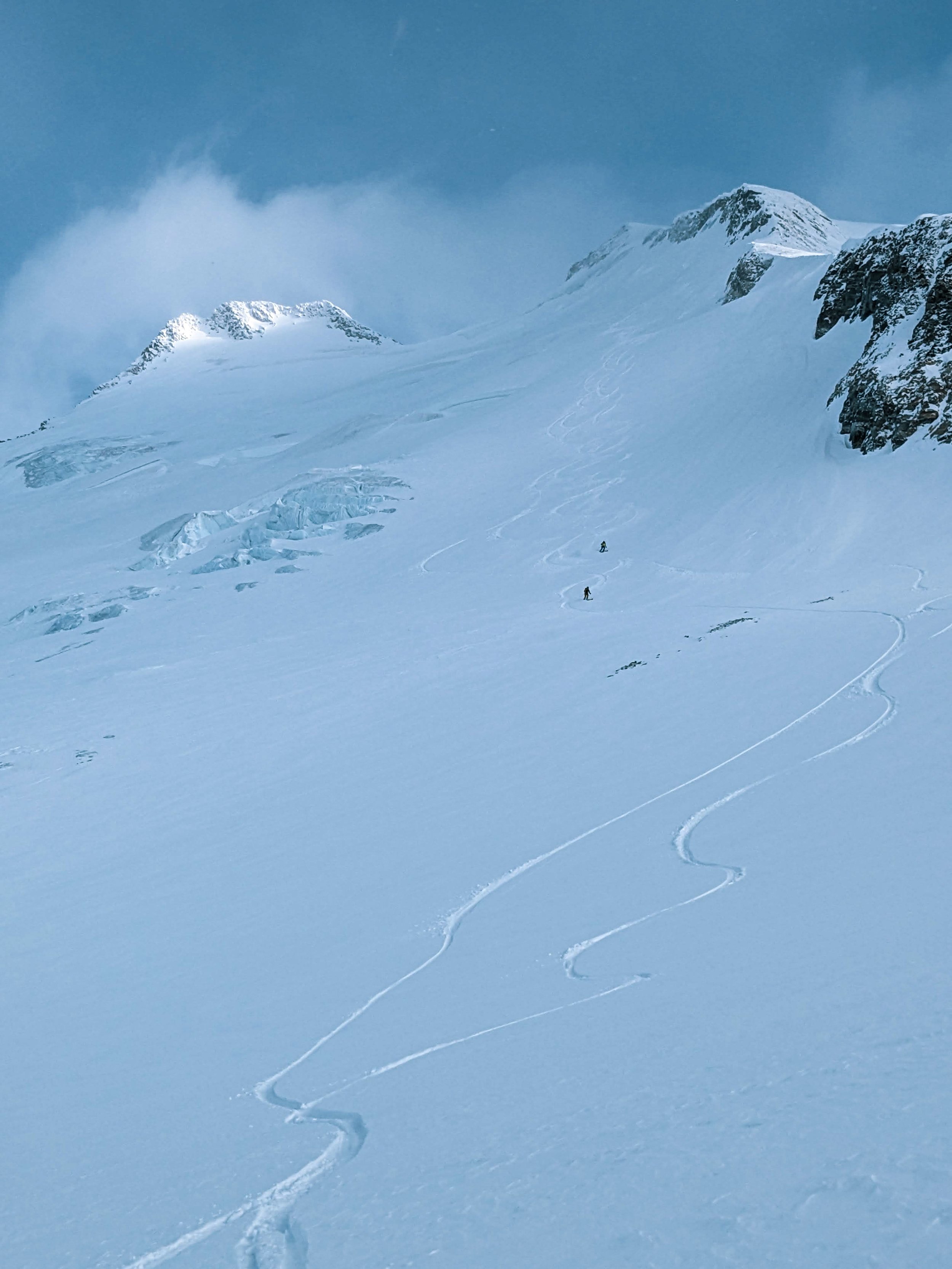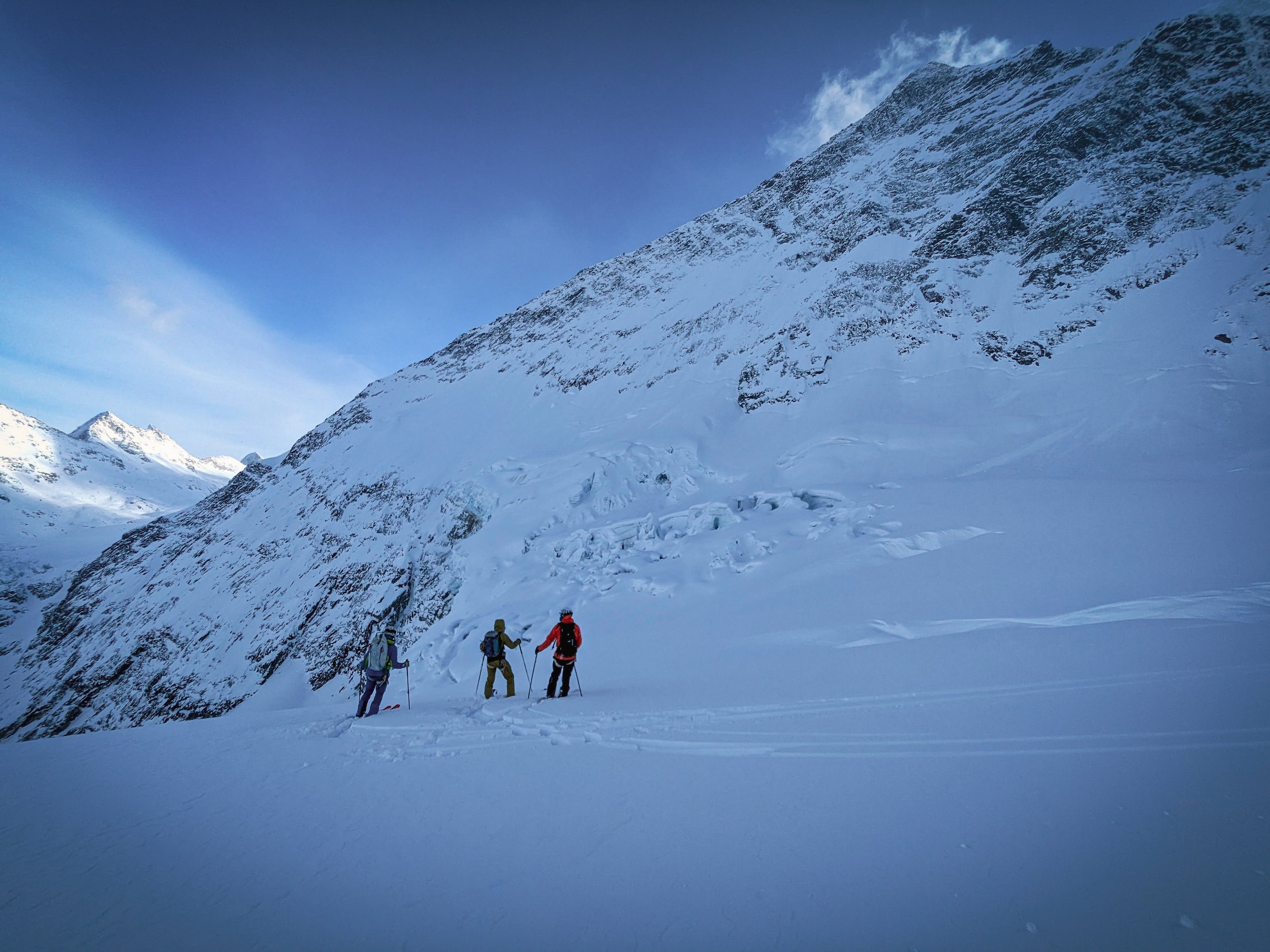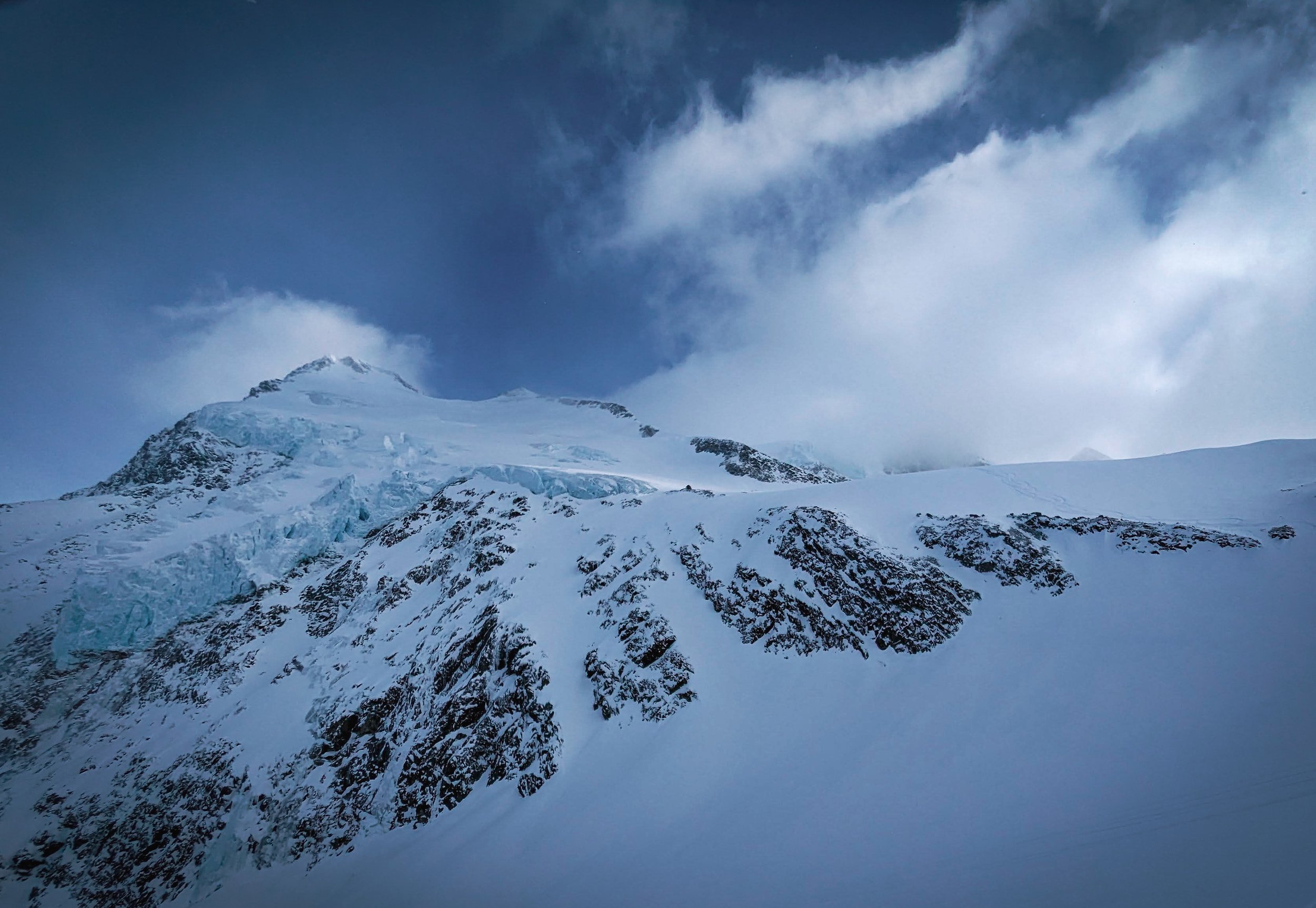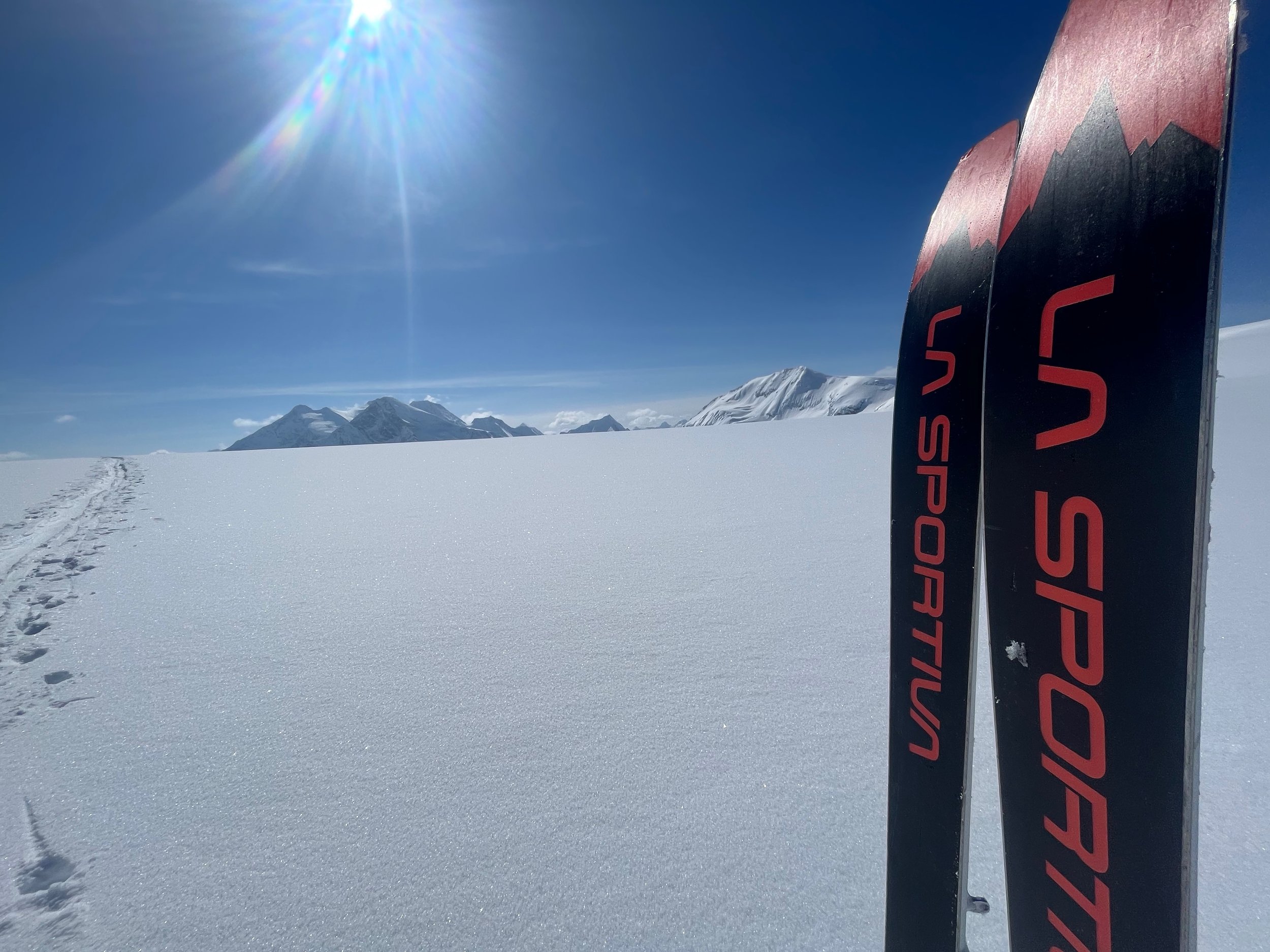Deep in the Selkirks
An expedition into the Southern Selkirks in search of rarely skied lines
Among mountains rarely traveled, I find that I can break a barrier of mind: to look creatively at the world through your eyes only. After all, you’re not following through a lens from before.
This story is an actualization of that in a remote portion of the Selkirk mountains that really only sees passing travelers on the Bugs to Roger’s – not folks reaching towards summits or complex ski mountaineering routes.
It all began when Taylor Sullivan shot me a text message on Monday March 13th around noon saying, “a weather window is rolling in for North Faces in the Southern Zone of the Selkirks of British Columbia. We’re looking to hit as many lines like the Comstock Couloir up there. If you can get here tomorrow with an overnight kit you’re welcome to come.”
He had me at Comstock. Last year (2022) I soloed the Comstock Couloir in a single day and was ecstatic to head back to this seldom traveled remote area. Particularly, to spend a week at the toe of the Deville and Fox Glaciers to deepen the process of grasping the grandeur of these mountains, and to do so with a strong crew. So, I went on a quick run, packed up my overnight gear, and tossed together whatever light weight food I could find in anticipation of being out there for 6 nights. It was rushed so rice, ramen, salami and sardines were on the menu. Not to mention all the gels in my pantry and about 15 Snickers.
The 8-hour drive commenced, I slept in the back of my truck just outside Revelstoke and then met the crew atop the pass around 7am on Tuesday March 14th ready to boogie.
The crew consisted of five: Taylor Sullivan, Chris Logan, JT Pellham, Chris Money Penny, and myself. The good weather was forecasted to roll in on Thursday so we had a day to get to our basecamp, a day to scout, and then it was go time.
Day one: A whiteout glacial traverse to basecamp
We departed the Illecillewaet trailhead to make our way over the glacier and onward to basecamp. With 60 lb packs, we all started feeling the weight of 6 days’ worth of food for hungry boys right away, but the banter and excitement for what lay ahead fueled the march. As we crested the toe of the Illecillewaet glacier, the visibility diminished to nothing and the winds increased dramatically. We were in a whiteout – or ping pong ball as commonly called. This was manageable throughout the 6 miles crossing the Illi and above the Geikie Glacier thanks to the second person in the skin track line having their phone out with FATMAP up guiding the leader away from perceived depressions and crevasses in the glacier.
“A little right here”
Five steps forward
“Oh actually a little left now”
Five steps forward.
And so on for about 6 hours.
We successfully managed some avalanches in our descent down to glacier circle thanks to the strategic ski cutting from our “tail guide” JT. Push it with your skis, watch it cut, ski the bed surface down to the trees and get ready for bed.
12.79 miles, 5,489’ vert
Day Two: Scouting while the storm persists
Taylor and myself staring at the Comstock Couloir
With Comstock and Feuz in our minds, we made our way up the Fox Glacier in a rather dramatic storm to do some scouting of a prospective route over Hasler or down to the basin to the North of the Dawson Massif. The ascent onto Fox Glacier was about a 5/10 on the sporty scale due to managing unbonded snow and some thin areas with rock exposed on the bootpack up to the glacier.
With roughly 40 mile per hour winds blasting us as we reached Twisted Rock, we looked at the prospective objectives, made a mental note and decided to head back to base camp for an early day to get some rest for the beautiful weather to come.
Having skied Comstock the prior year, I knew it was likely not in condition due to the low snow this year. Furthermore, the vantage point we got of it on this stormy day showed a rather peppery top section which alluded to the choke and steeper parts being unskiable. The only way to find out would be to look at the line directly in the coming days.
With this noted, we planned on skiing the NE Face of Donkin the following day and seeing where the day led as we’d be staring right at the Comstock and Feuz lines from below en route to and from Donkin.
6.42 miles, 4,236’ vert
Day 3: Donkin NE – A Face of Faces
Donkin Northeast standing proud from the Illi Neve
One of the biggest cruxes of the trip was figuring out what time to wake up. This was because most of our phones and watches were on different time zones: being PST or MST – a classic time traveling conundrum of Roger’s Pass. Without too much complication, we decided to get up at 5am not really knowing which 5am this was, ha. Clearly mountain misfits not mountain mathematicians.
We had an efficient track put in up the Fox Glacier from the day prior so it took us about two hours to reach Twisted Rock rather than the four hours from the day prior. Skies were blue, the wind was nonexistent, and there were five giddy mountaineers ready to capitalize.
The crew making their way up the Fox Glacier with Selwyn looming above
With a little looking around, ridge hopping, and contemplation, we decided on a hidden route down to the basin separating Fox and Mount Dawson. Money Penny led this descent, made it to the mandatory drop and exclaimed “It’s only a foot. Just hop off.” It turned out to be closer to 6 feet which didn’t particularly matter because the snow was soft beneath and there was no exposure, but it was a testimate to his Tasmanian demeanor.
We cruised down to the basin which proved to be a lovely powder warmup as we stared directly at Donkin’s daunting NE Face directly in view.
It was rather pleasurable for me to be heading towards Donkin, as when I skied Comstock last year, Donkin was the face I dreamt of skiing. Of all the adventures and faces I’d seen in skiing 31 of the Fifty Classics last year, that was the first and foremost face that haunted me. And there we were. Five savages with that specific agenda in mind.
We opted for a sneak to the glacier beneath Donkin after navigating a few crevasses beneath Feuz and Michel. Then, made a lovely contour across the basin beneath Donkin to efficiently reach the base of the face but also to let its power sink in.
Contouring to Donkin
Anticipating we’d be able to skin rather high on the face, we met a rather stubborn ice layer that forced us to put on our ascent plates and crampons and aim for the north ridge. Taylor led the first section of booting up to the ridge in hip deep powder after crossing the stiff section. From there, I led the pack up the ridge and to the summit of Donkin with a couple shift changes with Taylor. From here, Logan (our splitboarder token) generously named Taylor and I “turbo team.” Mostly because we’re both strong at ascending through deep snow, but more likely because Taylor and I carry a similar tormented mind when we look at mountains. Essentially a mind state that blows up with ideas leaning towards I gotta go ski them all. It’s a demented state of motivation and inspiration among the high peaks.
Okay, it’s not demented, it’s just an all encompassing sense of inspiration. It fuels your mind in all directions, then centers in on a target in a pure state of focus, anticipation then execution. It’s what gets objectives done. Maybe we are actually mountain mathematicians rather than misfits after all.
Views from the top of Donkin with Feuz to the right and Fox center
So, there we were, standing atop Donkin without an ounce of wind and plenty of powder on the face to let five folks carve their own unique etching.
Logan dropped in first because we all wanted to watch some beautiful rooster tails fly off the back of his board on this magnificent face. His execution was delicious. And the deliciousness followed for the rest of us.
After skiing the top 1500’ pitch, we party shredded the remaining 1500’ of fall line rolling glacial skiing in a state of bliss. One of the more beautiful faces I’ve ever seen, we just skied. Adding our names to a list of only a handful of others who have had the pleasure of carving tracks on Donkin.
Now it was time to head back home or to ski another objective. Taylor set off first with a quick transition and you could tell that demented – I mean inspired – state was carrying his mind as he walked with vigilance back towards the Comstock. Rather than heading directly back up Twisted Rock to get back to basecamp, Taylor didn’t say anything and just kept walking towards Comstock. We all knew what he was doing, but we also all knew the line just simply wasn’t in condition.
The choke of the line showed a prominent rock slab. That portion definitely could have been rappelled under force of skiing the line, however that suggested the possibility of thin faceted snow barely covering the rest waiting to avalanche right off the line to ground. You don’t want that to ever be the case, but you especially don’t want that on a line of the likes of the Comstock.
It was rather lovely to be retracing some of the tracks I’d taken to ski Comstock solo last year. It was a comparison of pure intensity with that of blue-sky mountain bliss. It reminded me of how dialed in that day out to the Comstock was: pure focus paired with an objective that required my full self. I do say that it is one of the top three objectives I’ve done that has yielded a pure state of flow. It’s what is required when you’re out doing a 13,500’ vert day solo to ski a big line. It’s beautiful. It’s bold. It’s something I do consider doing less of in comparison to my younger self.
After Taylor’s mind got a bit of sense, we caught up to him, had a reasonable conversation between the group and opted to head back up to Twisted Rock to make our way home. After all, we were already 10 miles and 8,000’ of elevation gain into the day with a 1,300’ rather engaged ascent to get to the top of the of our sneak route.
We ascended a warming southwest face as fast as possible to minimize prospective exposure to rapid settling snow from solar exposure. Then, encountered that 6 foot drop which was now about 20 feet of rotten quartzite thanks to five people scraping it from the morning – oh yeah that would only be us.
We sent the snowboarder, Logan, out first to solo the rock pitch and he did it beautifully, carrying a rope up with him to set up a human weighted anchor on the other side of the ridge. Money Penny went next, the anchor genius among us, and he set a couple pitons, brought me, JT and Taylor up.
There we were, ready to ski the 4,500’ back to camp via the Fox Glacier with gorgeous golden hour light illuminating Comstock. It doesn’t get much better.
14.38 miles, 9,291’ vert
Logan, Taylor, then JT ridge walking our way to the exit with a western face of Fox lit up in golden hour
Day 4: Augustine – A complex Ice Navigation
Myself, Taylor, then Logan ascending the Selwyn ledges to reach the Deville Glacier - Photo by JT
Money Penny left us sadly back over the Illi to get to work, so now it was Logan, Taylor, JT and myself. We decided to head over to the Deville Glacier with Augustine in mind and an openness to seeing where the day would take us and what conditions would permit. The low snow year here in BC definitely has quite the amount of lines not in condition, or rather they are a bit sportier – that’s the mindset we opted for.
We ascended the Selwyn ledges first which takes you from glacier circle onto the Deville Glacier. Sporty, thin, windboard were all part of the equation on this 1900’ ascent. The terrain in this area is quite unique due to recent glacial recession. Photos from the 1900’s show the entire glacier circle area completely glaciated, but now the toe of the glacier has risen more than 2,000’ in elevation. It’s a very visceral sensation to witness this such recent change right in front of you and to see the carvings in the landscape so fresh.
On the Deville
Once we crested onto the Deville Glacier, we started heading towards the Bishop Glacier to take a look at Augustine. The demented Taylor came alive at this point and he was walking past Augustine. Logan, JT and I all joked about oh there goes Taylor, he’s got something in mind. “Are we gonna follow him?” “Yeah we’ll follow him.” “Maybe he’s gonna try to ascend Hasler from the back.”
“Oh he’s turning around.”
And then we back tracked towards Augustine to ski the East Face through the seracs and off the toe of the glacier.
Inside the crevassed couloir making our initial ascent up Augustine
We opted to take a couloir that was created by the hanging glacier nestling next to a rock rib on the eastern end of Augustine. Logan, being third in line after Taylor and I had the pleasure of having a non-consequential crevasse fall – just up to his shoulders before the board on his back caught him. No big deal. We were roped – so responsible out there.
The route finding to get to the base of the east face was rather involved. We made our way through the icefall tiptoeing through a crevasse with 30-foot ice walls on our sides. And there was the east face, with a steep bergschrund guarding it and a bit of pepper on the face.
Bootpacking up the east face was akin to a vertical breaststroke. I know swimming is a typical term used for booting up in deep snow, however this was unique – a 50º wall with snow up to your shoulders. We ascended the face successfully and reached a sharp ridge at the top with enough room for just one of us to stand on. So, we all nestled there next to one another peeping our heads off into the distance staring deeper into the Selkirks.
Looking out to Kilpatrick through a heaven hole in the Augustine Ridge
And there was Kilpatrick – perfectly framed with a Northeast Face that looked playful at the same time being far enough away from society to draw an obscure allure to it for the next day.
We indulged in the bit of sun that was peeping over from the south, which was lovely after having slowly ascended the complex north side of Augustine which was a bit of an ice box.
Kilpatrick standing proud
The ski down Augustine was unique – a short and steep face with absurd amounts of snow stuck to it. Then a party ski through the crevass and ice walls continued by a party shred down the glacier all the way to the toe of it with a final straight-line over the 20’ of exposed ice (euro style) to make it safely down to the Bishop Glacier.
A view back up Augustine
The day was pretty much wrapped up – we thought. But there was an astounding feat waiting to happen as we descended the Selwyn ledges back to glacier circle.
THE RISE OF THE LEGENDARY SPLIT SKIER
Taylor takes the lead off the Deville glacier over the exposed wind board/icy couloir leading us back to camp. Cocky as we can see our sleeping quarters, but immediately jarred by the gnar of descending the ledges in terrible conditions – adrenaline boost activated and gripped status taken over.
Taylor goes, side slips the choke, does a turn maybe two. JT, the same, a couple more turns than Taylor. Me, right in the middle of the two of them, maybe three awful turns.
LOGAN, the split ski ninja. Shows us the immaculate first turns of the first split ski descent down the Selwyn ledges. Turning with grace on rocks, ice and wind board. Floating like baby Jesus over and around the exposure.
A legend is shown and now we’re all followers.
13.13 miles, 6,102’ vert
Day 5: Kilpatrick, Wheeler, Selwyn Link Up – Flowing throughout the mountains
Logan making his first turn down Kilpatrick with Taylor and myself having just exited the face. Wheeler standing tall in the backdrop.
Departed camp and utilized our boot pack up the Selwyn ledges to efficiently enter onto the Deville Glacier. Taylor and I shared an unspoken drive to quickly reach Kilpatrick that day so we immediately transitioned from our plates and crampons to skinning across the glacier in a rather running fashion. It’s 7 miles and 5k vert to reach Kilpatrick via the Deville to Black glacier, so a bit of a walk. We hadn’t spoken explicitly about a serious linkup for the day, but I know that Taylor and I were thinking similar thoughts: move efficiently to Kilpatrick, move onwards to Wheeler and ski something bigger on the way back – ideally Selwyn.
Myself cresting the summit of Kilpatrick
We skied the East Face off Kilpatrick which was a rather straightforward ascent and descent. The face itself held perfect snow and was nicely lit by the morning sun. Each of us put a fast five turns down the 45º degree face which we all acknowledged was most likely too little and that we should’ve made a few more to savor it. Sometimes fast is more fun. The glacier rolls quite high onto Kilpatrick’s Face so we party skied the rolling wind buff that lay on the northeastern flanks down to a nestled space without wind to transition before heading up the Northern side of Wheeler.
All of us anticipated that the ascent up Wheeler would be complex – requiring careful navigation around crevasses and under seracs similar to Augustine. I think all of us were quietly dreading this ascent in anticipation that it would be slow, methodical and frigid just as Augustine was the day before. However, we were pleasantly surprised with very filled snow bridges and made an efficient ascent up Wheeler to drop the steep East Face off the other side.
The top of the line was rather intimidating due to it’s steepness of around 50º – probably more in all honesty. Furthermore, Wheeler stands as a tall summit absorbing all prevailing winds coming from the Black Glacier or the Grand from the south. Consequently, we were hesitant that the snow could be variable.
Cue JT: our freeride tail guide. Rather than testing the slope, JT saw the crevassed glaciated basin lying 1300’ below and formed around 10 of the most delicious big mountain turns I’ve witnessed on a remote big mountain face. We all skied the face fast – albeit not in JT style – and congregated with smiles beneath after a seamless linkup of the two high peaks on the Black Glacier.
Then we sailed back towards the North in direction to loop back up with our skin track from earlier on the Deville. We stopped, had a snack, then I said, “It’s only 2pm, so what’re we skiing next?”
The group mumbled around with internal debate of an early day back to camp.
I proposed, “Let’s ascend the South side of Selwyn and ski the North Line back to camp. It’s 5,000’ of continuous glacial skiing all the way back.”
We all looked around. The question was whether it was possible to ascend the South side of Selwyn.
I shared that I had scouted it yesterday while skiing Augustine and knew that a shelf led close to the summit. Anyways, JT wanted to ski this line as an objective the following day and we all were on board. Then we decided it would be more epic to do this loop with Selwyn and we were on our way.
A bit of free heal classic cross-country glacier skiing later and we were beneath the South side of Selwyn. Entering onto the Bishop glacier was a rather psychedelic experience for all of us as we glided down through a shaded slope with no definition in any perspective. Up, down, left and right all seemed to disappear in my mind but I just kept gliding towards the only single defining feature in sight – the line dividing sun and shade from the large Augustine ridge behind me. I thought it was just me but then everyone entered into the light and we all laughed hysterically about the delusion of that glide.
JT and Taylor approaching the south of Selwyn (standing tall mid photo)
We had 3,000’ of ascent to get up to Selwyn, so we all turned it into gear and without a word hustled up to the basing between Hasler and Selwyn on the South. Swiftly, we made a series of zagging skin tracks, a quick boot up a moraine, then back to skinning quickly to the base of the steep shelf. We were about 9k vert into the day and 14 miles, so the fatigue was definitely setting in. As we transitioned into our ascent plates, JT pulled out some Caffeine pills and handed them around. Logan, Taylor and I were hesitant, then we all acquiesced, cheered, popped the booster shot and started running up Selwyn South.
The ascent track was difficult due to a breakable crust, but our plates and aspirations carried us to the top. The caffeine leader, JT, lead the first half. He absolutely transcended from his mortal being and floated up the majority of the south face with vigor. Then I took over for the final bit. We were running ha.
A steep frozen scree section guarded the top and we all formed a funny twinkle toes-esque tip toe to the ridge.
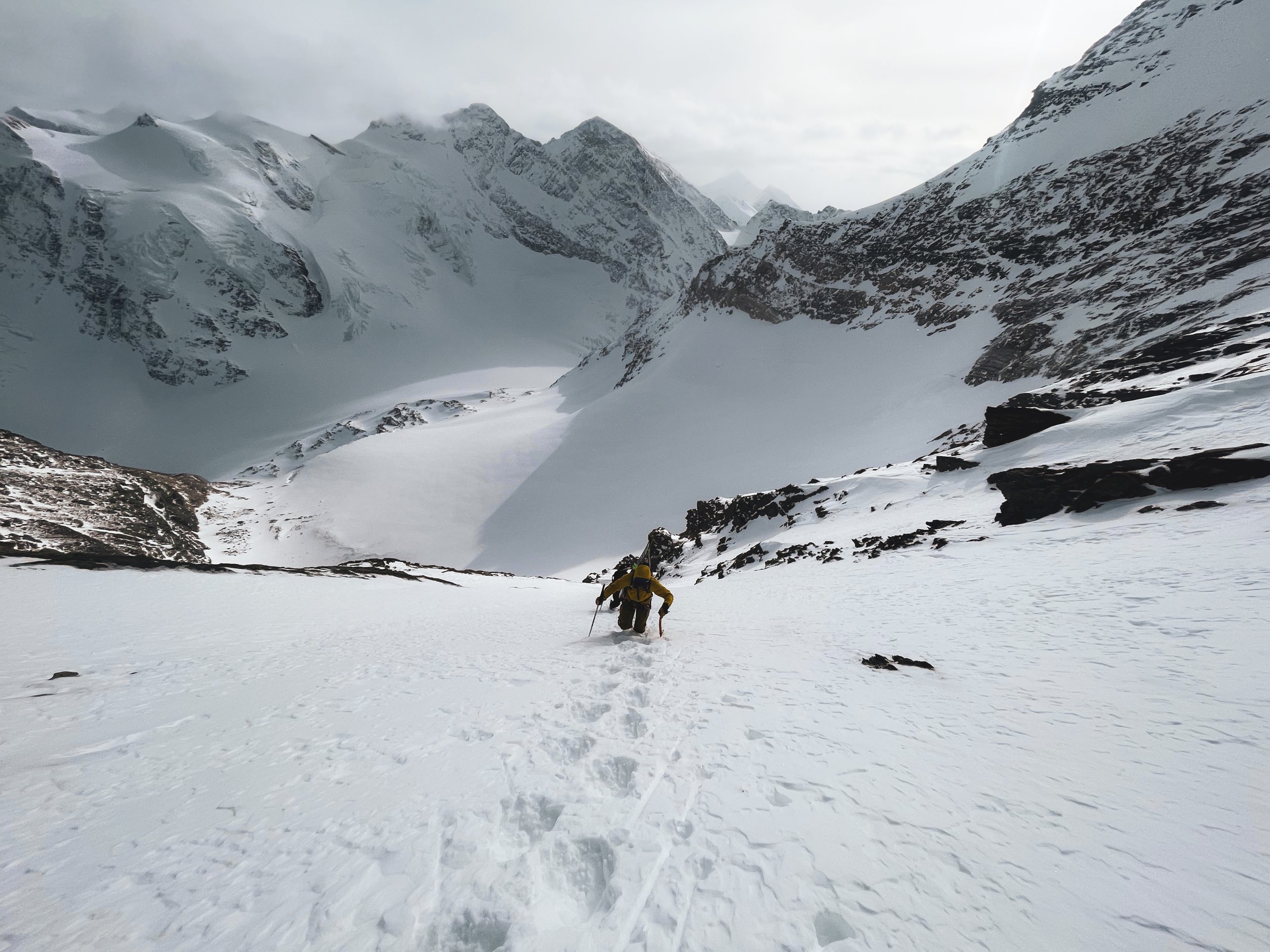
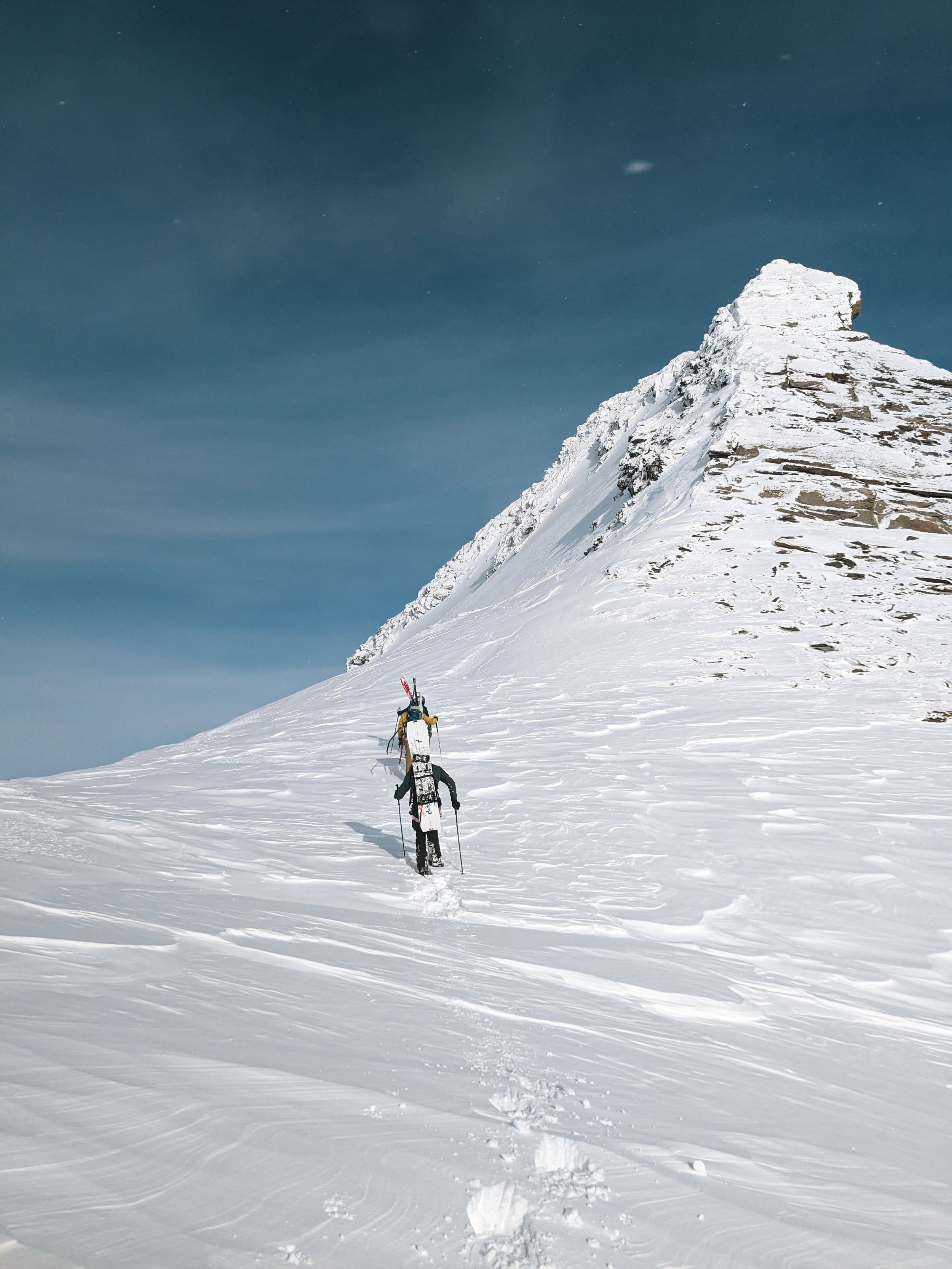
There’s a good chance that descending Selwyn North from the top down to Glacier Circle was a first descent, so that was a fun perk to this linkup.
There was a bit of exposed glacier ice at the top, so we engaged our European tactics of straight-lining over ice hoping there is soft snow beneath. It’s a bit gnarlier doing that here in the remote Canadian Selkirks because the closest café is… well the closest café isn’t close at all.
Descending Selwyn down to Glacier circle is an aesthetic line – 5,000’ of continuous skiing that begins with riding a hanging glacier prosing all of that exposure just to the right. You contour left, then descend beneath Seracs for the middle section on the Fox Glacier and beneath the Hanging Selwyn. Take the route to the right to ride the toe of the Fox out through unique crevassed features. Doing this final bit through the broken glacier is a geological trip because the glacier circle basin showcases some of the most stark glacial recession of the past century. With moraines forming like a Jurassic shark fin and tree lines absurdly disrupted in a manner representative of still thawing soil.
A delicious day.
18.35 miles, 10,243’ vert
Day 6: The out
A bluebird day back over the Illecillewaet Glacier with shirts off, heavy packs, and three satisfied ski mountaineers staring at the best IMAX movie ever of the Donkin NE Face and Selwyn North lines they’d just skied to really let that satisfaction set in.
11.56 miles, 3,091’ vert
My necessary gear:
First, good people
The La Sportiva Gear I relied on for this journey:
Skis: Tempo
Boots: Skorpius CR II
Extreme cold Down layer: Dolent Down Jacket
Jacket Shell: Crizzle Evo
Insulative Layer: Bristen Thermal JKT
Pant: Bernina 3.0
Bindings: ATK Haute Route
FATMAP for mapping
LEKI Helicon Poles
A variety of LEKI gloves
Petzl Gullies and Irvis Hybrid
EXPED whiteout pack, ultra 5r sleeping mat, down booties, winterlite -15º sleeping bag


